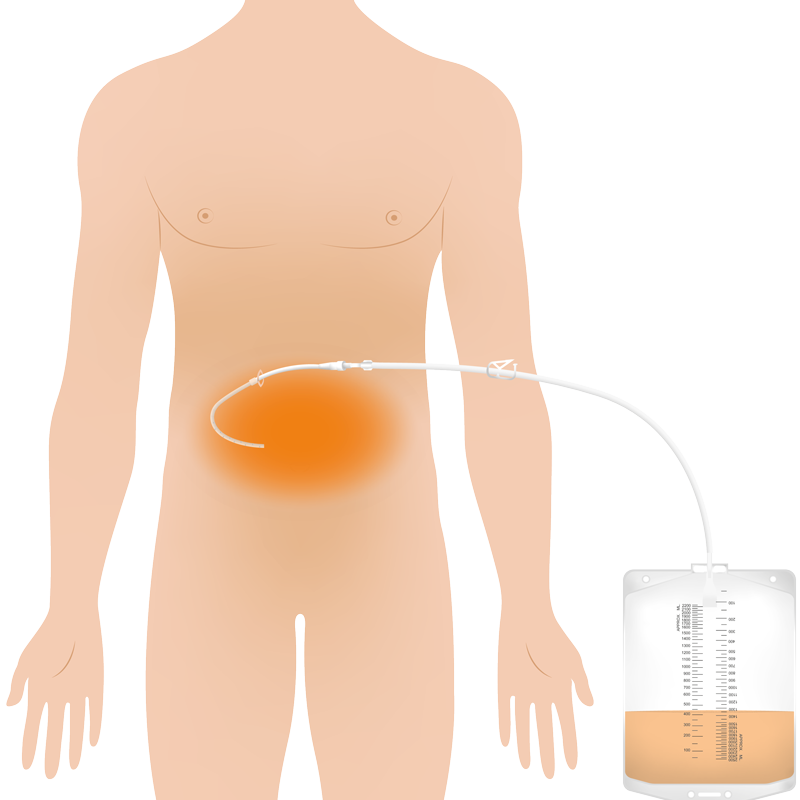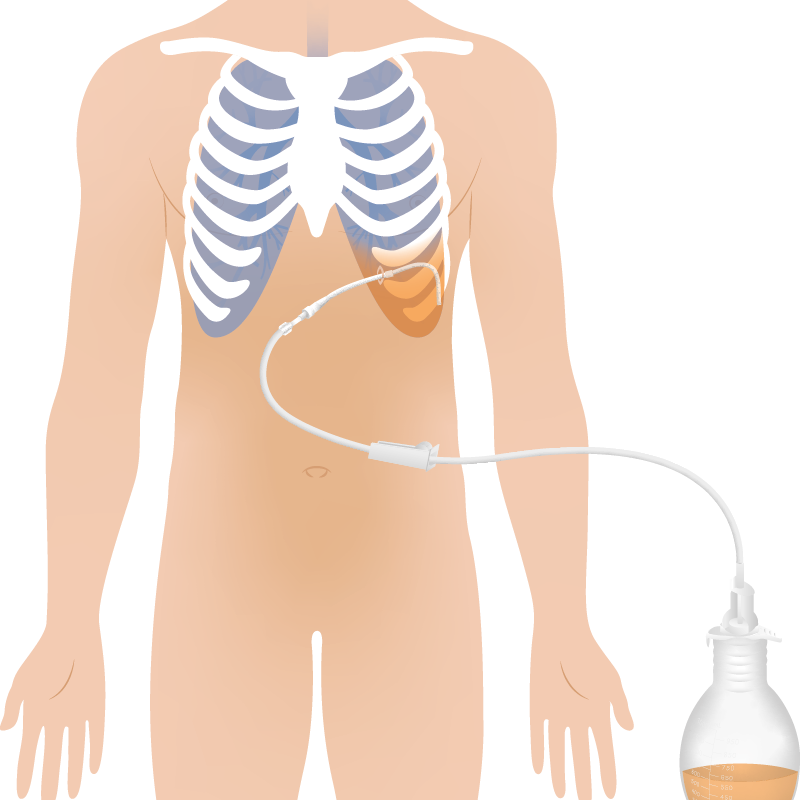Information for the patient
The following points are useful to inform the patient about before the physician implants the catheter. You are welcome to give our Patient and Drainage Information (Swedish) leaflet to the patient. You can order these free of charge from us.
Drainage at home
After the physician has implanted an indwelling catheter, the patient can be discharged from hospital. The patient can drain the fluid at home and does not need to go to the hospital. You also no longer need to admit the patient for short-time drainage of recurrent pleural effusion or ascites.
The patient himself, relatives or home health care can carry out the drainage after training by an ewimed staff member. We can educate the patient and relatives in the patient’s home.
The catheter - product description and use
The catheter is a thin, soft silicone tube. It lies partly under the skin and there is tissue ingrowth around the cuff where it emerges from the skin, keeping the catheter fixed. There is no need to replace it. At the visible end there is a safety valve with a cap. When the catheter is not in use, the safety valve is automatically closed.
After draining fluid, the catheter is rolled up against a soft foam catheter pad and covered with a dressing. You can therefore not see it under your clothes. This allows maximum freedom of movement, as you only need to connect a drainage set for the short time you are draining the fluid.
Training on how to use the drainage set
Our staff will train the patient, family member or home health care provider on how to use the drainage set for home use. We do this at the time of discharge from hospital, either at home or at the home health care provider.
The drainage set for use at home can be ordered in advance from ewimed. We can deliver them to the home health care or the patient directly. After the training, the patient or home health care provider will be able to use the drainage set.
Aftercare
Please provide a clear drainage protocol in the hospital discharge letter for the patient or in the referral to home health care. It is then useful to add “and more often if necessary” after the number of recommended drainages per week, in case the amount of fluid produced should change.
Naturally, you can contact us if you have any questions.


